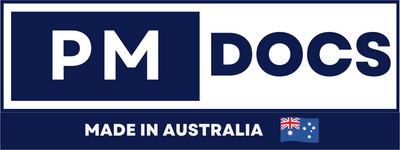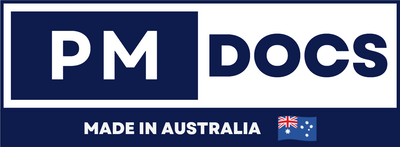ISO 9001
Introduction
ISO 9001 is an internationally recognized standard for quality management systems. It provides organizations with a straightforward framework to consistently meet customer and regulatory requirements, enhance customer satisfaction, and continuously improve their operations. Whether you are new to ISO 9001 or looking to enhance your knowledge, this blog provides valuable insights into the benefits, implementation process, and best practices of ISO 9001. Read on to discover how ISO 9001 can help your organization achieve operational excellence and drive customer satisfaction.

What is the ISO 9001 Standard?
ISO 9001 is an international standard that sets out the criteria for a quality management system. It is the most widely recognized and internationally accepted quality management system standard. The standard provides a flexible framework for organizations of any size, industry, or sector to establish, implement, maintain, and continuously improve their quality management systems. It focuses on customer satisfaction, process improvements, risk management, and the involvement of top management in driving quality improvement. The ISO 9001 standard is applicable to any organization, regardless of its size, industry, or sector. Its adoption helps organizations enhance their customer satisfaction, consistently deliver quality products or services, and improve overall performance.
What does QMS Mean?
QMS stands for Quality Management System. It refers to a systematic approach implemented by an organization to ensure the quality of its products and services meets or exceeds customer expectations. It involves establishing processes and procedures to control, monitor, and continuously improve quality throughout all aspects of the organization's operations. A QMS typically includes policies, objectives, documentation, training, and performance measurement to ensure consistent quality and customer satisfaction.
How to Become ISO 9001 Certified?
To become ISO 9001 certified, follow these steps:
- Understand the ISO 9001 Standard: Familiarize yourself with the requirements, principles, and concepts of ISO 9001. This will provide a foundation for implementing an effective quality management system (QMS) within your organization.
- Identify Key Processes: Identify the core processes within your organization that need to be streamlined and improved to meet ISO 9001 requirements. This may include management, operations, customer service, and quality control.
- Develop a Quality Management System: Create and implement a QMS tailored to your organization's needs. This system should document processes, procedures, policies, and objectives that align with ISO 9001 requirements. Ensure that all employees know their roles and responsibilities within the QMS.
- Train Employees: Provide training to employees at all levels to ensure they understand the importance of quality management and ISO 9001 compliance. This includes educating them about the QMS and their role in maintaining and improving quality standards.
- Conduct Internal Audits: Regularly assess your QMS through internal audits to identify any non-conformities or areas for improvement. Qualified personnel should conduct these audits independent of the processes being audited.
- Correct any Non-Conformities: If any non-conformities are identified during internal audits, take corrective actions to address them. This may involve revising processes, training employees, or implementing new controls to ensure compliance with ISO 9001.
- Choose a Certification Body: Select an accredited certification body to conduct an external audit of your organization. This audit will determine if your organization meets the requirements of ISO 9001.
- External Certification Audit: The chosen certification body will conduct an initial certification audit, reviewing your QMS and processes. They will verify that your organization meets the requirements of ISO 9001. If any non-conformities are identified, address them and conduct a follow-up audit to verify their resolution.
- Maintain and Improve your QMS: ISO 9001 certification is not a one-time achievement. Your QMS requires ongoing maintenance and continual improvement. Conduct regular internal audits, address any non-conformities, and engage in continuous improvement activities to enhance your QMS and maintain certification.
- Periodic Recertification Audits: ISO 9001 certification is typically valid for three years, with surveillance audits conducted annually to ensure ongoing compliance. Before the end of the certification cycle, plan for a recertification audit to continue holding ISO 9001 certification.

How Much Does ISO 9001 Certification Cost?
- The cost of ISO 9001 certification varies depending on several factors, such as the size and complexity of the organization, the scope of the certification, the level of readiness of the organization's existing quality management system, and the certification body chosen.
- Generally, smaller organizations with relatively more straightforward processes can expect to spend around $5,000 to $10,000 for ISO 9001 certification. Medium-sized organizations may spend between $10,000 and $20,000, while larger organizations with complex processes might incur upwards of $50,000.
- It is important to note that the certification cost includes several components, such as auditing fees, registration fees, and ongoing surveillance audits. Obtaining quotes from multiple certification bodies and conducting a thorough cost analysis before making a final decision is advisable.
Why do you need ISO 9001 certification?
ISO 9001 certification is needed for various reasons:
- Improved Quality Management: ISO 9001 certification ensures effective quality management systems are in place. It helps organizations develop and implement processes consistently delivering high-quality products or services. This certification provides a framework to identify and address quality issues, improving customer satisfaction.
- Increased Credibility and Trust: ISO 9001 certification is globally recognized, enhancing an organization's credibility and trustworthiness. It demonstrates that the organization is committed to delivering quality and meets international standards. It gives customers and stakeholders confidence in the organization's ability to meet their expectations.
- Competitive Advantage: ISO 9001 certification can provide a competitive advantage in the marketplace. Many customers, huge organizations, or government agencies require suppliers to have ISO 9001 certification as a prerequisite for doing business. This certification can give an organization an edge over competitors and open doors to new opportunities.
- Process Improvement: ISO 9001 certification emphasizes continual improvement and encourages organizations to evaluate and enhance their processes. By implementing robust systems, organizations can identify areas of improvement, eliminate inefficiencies, reduce errors, and enhance overall performance.
- Regulatory Compliance: ISO 9001 certification ensures that an organization complies with applicable regulations and legal requirements for its industry. It helps establish a systematic approach to meeting regulatory obligations, reducing the risk of penalties, fines, or legal issues.
- Employee Engagement and Efficiency: ISO 9001 certification involves the active participation of employees in the quality management processes. It promotes a culture of quality, accountability, and continuous improvement. Engaged employees contribute to increased productivity, reduced rework, and improved efficiency within the organization.
- International Recognition: ISO 9001 certification is recognized and respected globally. This certification opens doors to international markets and demonstrates adherence to international quality standards. It simplifies business transactions with organizations worldwide and builds trust among international partners.

What are the ISO 9001 Clauses?
The ISO 9001 standard consists of 10 clauses, which are as follows:
Clause 1: Scope
This clause defines the organization's quality management system (QMS) scope and specifies any exclusions.
Clause 2: Normative References
It lists the applicable standards and documents referenced in the ISO 9001 standard.
Clause 3: Terms and Definitions
This clause defines vital terms throughout the standard to ensure consistent understanding and interpretation.
Clause 4: Context of the Organization
It requires an organization to determine its internal and external context, including identifying interested parties and determining their requirements.
Clause 5: Leadership
This clause addresses the organization's commitment to leadership, including demonstrating leadership behaviors, establishing a quality policy, and setting quality objectives.
Clause 6: Planning
It focuses on the organization's planning processes, including risk assessment, determining quality objectives, and planning to achieve them.
Clause 7: Support
This clause covers the resources and support necessary to implement and maintain the QMS, including competence, awareness, communication, and documented information.
Clause 8: Operation
It addresses the operational activities necessary to deliver the organization's products or services, including process planning and control, customer requirements, design and development, and control of externally provided products and services.
Clause 9: Performance Evaluation
This clause requires monitoring, measurement, analysis, and evaluation of the QMS, as well as internal audits, management reviews, and addressing customer satisfaction.
Clause 10: Improvement
It focuses on the organization's commitment to continually improve the QMS, including nonconformity and corrective action, preventive action, and continual improvement.
These clauses provide a systematic framework for establishing, implementing, maintaining, and continually improving a QMS based on the ISO 9001 standard.
What are ISO 9001 Controls?
ISO 9001 controls are specific requirements or processes outlined in the ISO 9001 standard. These controls ensure that organizations meet the quality management system (QMS) requirements of ISO 9001.
Some of the critical controls outlined in ISO 9001 include:
- Management Commitment: Top management must demonstrate their involvement and commitment to quality management by establishing and communicating the quality policy and objectives and ensuring resources are available.
- Customer Focus: Organizations must determine and fulfill customer requirements and strive to enhance customer satisfaction.
- Process Approach: Adopting a systematic approach in managing processes and their interactions to achieve desired outcomes.
- Risk-Based Thinking: Identifying and addressing risks and opportunities affecting the QMS and its ability to achieve its intended results.
- Competence and Training: Ensuring that personnel performing tasks affecting conformity to requirements are competent and provided with necessary training.
- Documented Information: Establishing and maintaining documented information to support the operation of the QMS.
- Monitoring and Measurement: Implementing processes to monitor and measure the performance of the QMS, products, and services against planned objectives and requirements.
- Internal Audits: Conduct periodic internal audits to determine whether the QMS conforms to planned arrangements and requirements of ISO 9001 and is effectively implemented and maintained.
- Corrective Actions: Identifying and taking actions to address nonconformities and their causes, to prevent recurrence, and to continually improve the QMS.
- Management Reviews: Conduct regular reviews of the QMS by top management to ensure its suitability, adequacy, and effectiveness.

How Long Does It Take to Get ISO 9001 Certification?
The amount of time it takes to attain ISO 9001 certification largely depends on various factors, such as the size and complexity of the organization, its existing quality management system, and its commitment to the certification process. On average, the certification process can take anywhere from 6 to 18 months. This time frame includes developing a quality management system, implementing necessary changes, conducting internal audits, and undergoing an external audit by a certification body. The certification process involves multiple stages and requires consistent efforts from the organization to meet the standard's requirements.






